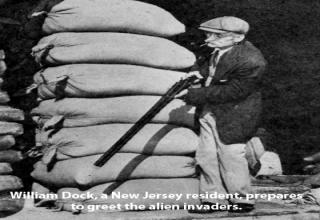The Impacts of the Railroad Expansion on Immigration part 1
The networks of railroads built both in Mexico and the United States at the beginning of the administration of Porfirio Diaz in 1876 to 1920 had lasting effects. Had the southwestern areas of the United States not been connected via the railroads to densely populated areas in Mexico where economic unrest abounded due to displaced campesinos and the implementation of haciendas, then it is possible that the economy of the southwest may not have grown at such rapid rates because the region would have lacked the large labor force filled by the displaced Mexican rural farmers.[1] Railroad distances in Mexico increased rapidly, In 1876 there had been only 691 kilometers [414 miles] built; by 1890 there were 8,948 [5368 miles], while in 1900 and 1911 there were 14,573 [8743 miles] and 24,717 kilometers respectfully [14830 miles].[2] Comparing a map of the Mexican Central Railway of May 1896 (Refer to Appendix Item 2c) to that of the Frisco Lines in 1912 and the connections of major railways from Mexico into Texas in such cities like Brownsville, El Paso, and Laredo (Appendix Item 2a), one can readily see the tangible connections of the Mexican economy to the United States, predominantly in Texas among other southern states. Over the next several decades the development of railroads in Texas, especially at and around Brownsville, was considered so important that in order to fulfill their labor demands, the Texas Chamber of Commerce with the support of Secretary of Labor Wilson lifted immigration restrictions that began to appear. According to the Brownsville Herald in 1919, The present restrictions in the law permitting immigration from Mexico to Texas are so stringent as practically to cut off entirely the bringing in of Mexican labor, even in the face of the great demand and attractive wages offered.[3] This article titled Texas Chamber of Commerce Takes Up the Immigration Problem gives the impression that Mexican immigration is the problem. On the contrary, the restriction of immigration prohibiting less Mexican immigrant laborers to enter was the big issue of the area at the time. The addictive nature of Mexican labor in the southwestern and Texan economies required a constant necessity of it; immigration restrictions were only seen as obstacles and not laws.
The Mexican labor force provided the U.S. railroads with the abundance of the cheap labor they desired, and in addition many were qualified to handle U.S. railroad work because they had gained earlier experience in building Mexican railroads. Further they seemed to be a controllable labor force since they accepted without complaint both low wages and poor working conditions.[4] By the 1890s the U.S. railroads, principally the Southern Pacific, Atchison, Topeka and Santa Fe Railroads, were hiring sizable numbers of Mexicans to work on their construction crews, digging roadbeds and laying tracks. Seasonal contracts were common at the time and the Mexican migrant labor was no exception. As an unexpected result many of the Mexican immigrant laborers remained after the initial construction of some of the railroads and remained as workers in track maintenance.[5] By 1908 it is estimated that 16,000 Mexicans were working on the western railroads with its peak occurring between 1910 and 1912.[6]
During the years from 1880 to 1930, total American immigration was increasing as evidenced by the immigration statistics following (see Appendix Item 3a). By 1910 two thousand Mexican rural farmers were able to cross the border on a monthly basis in order to obtain employment on and around the railroads.[7] While this graph shows only the number looking for work, the actual number of immigrants was much larger since families, relatives, friends accompanied the immigrant workers. In 1910 the U.S. Census counted 221,915 Mexican-born nationals but the total Mexican population in the United States was 367,510, which included citizens of Mexican parents born in the United States. Ten years later in 1920 legal Mexican immigration more than quadrupled to 890,371. Immigration peaked in 1924 by which time another 249,248 Mexicans came into the United States.[8] The Mexican immigrant population grew steadily replacing other populations of laborers in the southwest, especially Texas.
As mentioned before, seasonal contracts were commonplace for immigrant labor. It was assumed when the contracts expired the Mexicans immigrants would return to their homes in Mexico; on the contrary many still resided in the United States when the seasonal contracts expired because they were able to find permanent employment among the many industries of the southwest. Eventually the Mexican immigrant brought their families with them and began to settle in Mexican communities not only in the southwest, but immigrant laborers that ventured throughout the entirety of the United States also settled them. This was a result in the search for work using railroads, since the railroad networks had been an established part of the economy for more than a century. Though Mexicans had been traveling north for a decades [t]he new rail system made possible the rapid development of many industries in northern Mexico as well as the creation of an agricultural export industry and a mining industry.[9] By observing different maps, in chronological order from different time periods one can draw conclusions about the rapid nature of their development from the beginning of the Porfiriato to its end in 1911 as well as the growth of the major border towns and cities that were located along the border and were linked to the rest of the United States and into Mexico by railroads. A correlation between the amount of immigration and the railroad development can be seen in Appendix Item 3a.[10] During the years that the railroad networks expanded, the volume of immigration also increased.[1] Cardoso, 17.
[2] Osgood Hardy, The Revolution and the Railroads of Mexico, The Pacific Historical Review (California: University of California Press, 1934), 249.
[3] Texas Chamber of Commerce Takes Up the Immigration Problem; Labor Necessity, Brownsville Daily Herald, March 1919.
[4] John P. Schmal, Mexican Immigration in the Early Years: Helping to Build Americas Railroads, http://www.hispanicvista.com/HVC/Columnist/jschmal/02075.html, 2.
[5] PBS, Mexican Laboring on the Railroad, http://www.pbs.org/kpbs/theborder/history/timeline/12.html, 1.
[6] PBS, Mexican Laboring on the Railroad, 1.
[7] John P. Schmal, 2.
[8] Schmal, 2.
[9] Cardoso, 14.
[10] U.S. Immigration and Naturalization Service, Statistical Yearbook of the Immigration and Naturalization Service, 2000 (U.S. Government Printing Office: Washington, D.C., 2002); Will Franklin, Trivia Tidbit Of The Day: Part 169 -- U.S. Immigration,
http://www.willisms.com/archives/2005/09/trivia_tidbit_o_168.html
.






2 Comments